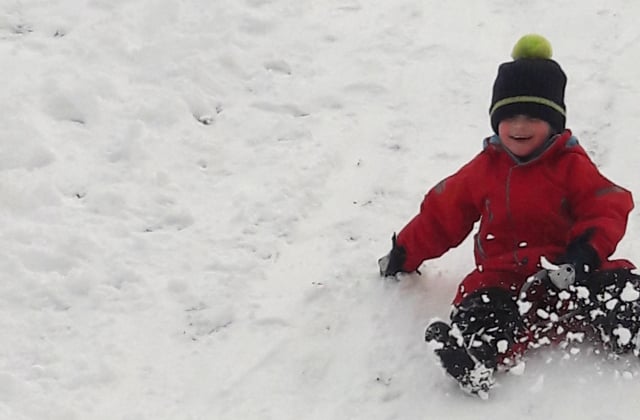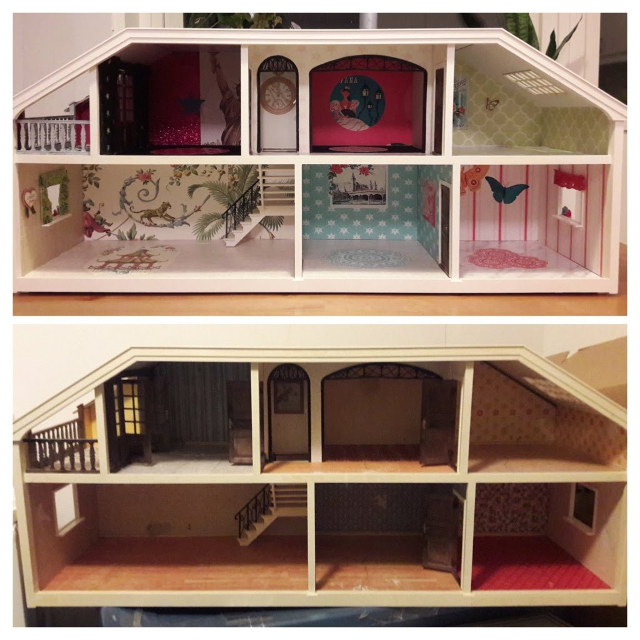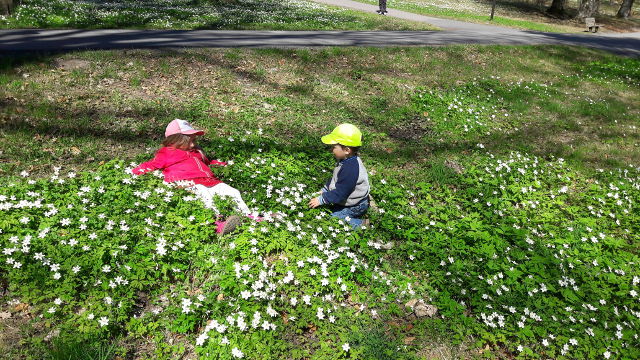How I embraced Sweden's second-hand culture (and why you should, too)

"My children need the newest and best of everything," said someone who was not me.
This article is available to Members of The Local. Read more Membership Exclusives here.
Don't get me wrong, my children are my precious angels whose needs I put before my own on a regular basis. They are also precious angels whose exuberant love of life means that almost nothing passes out of their possession in "gently used" condition. Which is why I have happily embraced Sweden's vibrant second-hand and upcycling market.
Somewhere out there, people have children who seem to virtually float on air when they wear their winter gear, just to give a seasonal example. So, when that winter gear makes its way into a second-hand store or group at a fraction of the cost of new, I am more than happy to give these items their second – and probably final – life.
The dents and dings that sometimes come with these items are usually either purely cosmetic or easily fixed. And, guess what? My children either don't notice or don't care that they aren't new. Likewise, even though I always manage to find good quality items that keep them warm, dry, suitably adorable, etc, their concept of having "the best" of anything is almost solely centered on aesthetics like their preferred colours.

Almost nothing passes out of my children's possession in "gently used" condition. Photo: Private
I can honestly say that I don't know how I would have managed our first winter in Sweden at full retail prices. As I wrote in my very first column for The Local, coming from the milder winter conditions of Spain, the sheer volume of winter gear necessary for our new life – especially for the children, who needed two sets of all outerwear, one for preschool and another for home – momentarily took my breath away.
After an expensive international move and all the financial implications that went along with it, I was daunted by the prospect of spending a small fortune to get my children properly equipped for Swedish weather. Like most parents, I would have gladly spent whatever was necessary, but I'm not ashamed to say it was a tremendous relief when a new friend introduced me to the beautiful Swedish word for second hand: loppis. The result was that we all spent the long Swedish winter very well-equipped and out of penury.
Even with the greater financial balance that has come with our second year in Sweden, I enthusiastically bought nearly every item of autumn and winter outerwear for the children through second-hand sources. It's also been a boundless source for other needs and wants of the entire family. Browsing the ubiquitous second hand, antique, and upcycling stores, I have made great discoveries, including some of the art, furniture, and décor that have made our house a unique and special home.
In addition to being properly dressed for all the whims of Swedish weather, the children also have a growing library of Swedish books and an abundance of toys. For Christmas, they received a combination of new and used items, including some items we personally upcycled. For our daughter, what was once a worn-out dollhouse is now a completely customized dreamhouse for some very lucky dolls.

My daughter's upcycled dollhouse. Photo: Private
My experiences have made me realize what a thriving industry second hand is here in Sweden. Many know that Stockholm is filled with great antique and vintage shops, but the choices here in southern Sweden are pretty remarkable, too. The official guide to the second-hand market in Skåne, Halland and Småland is a comprehensive but by no means exhaustive look at the many options. And, as much as we are looking forward to visiting the upcycling mecca of Sweden, ReTuna in Eskilstuna, we are quite content with the one we have here in Småland, American Gypsy in Svenljunga.
Judging by the "competition" I have in purchasing second-hand items from the online groups I frequent and at barnloppis sales events, it's not hard to see that many others feel as I do. There's little if any sense that buying second hand is in any way depriving anyone, especially children, of the best or newest of anything, or that doing so is detrimental to social respectability. Rather, it creates a cycle beyond materialism that, I believe, brings out the best in people.

Does recycling bring out the best in people? Photo: Private
I can't count the number of times I have been given second-hand clothes for my children, which I've accepted gratefully, used thoroughly, and – provided they were still in wearable condition – I have then passed on to someone else. Also, because I so often benefit from both this generosity and second-hand sales, I am more inclined to give away or donate those items later, rather than sell them. I have yet to meet a person who declined a needed item for free, even if it is slightly more than "gently used".
Most importantly for me, embracing Sweden's second-hand culture helps to shift the value from the items themselves to the principle of recycling, repurposing and sharing that will hopefully serve my children far better in life than believing they need the newest and best of everything.
Victoria Martínez is an American historical researcher, writer and author of three historical non-fiction books. She lives in Småland county, Sweden, with her Spanish husband and their two children.
Read more from her family column on The Local here.
Comments
See Also
This article is available to Members of The Local. Read more Membership Exclusives here.
Don't get me wrong, my children are my precious angels whose needs I put before my own on a regular basis. They are also precious angels whose exuberant love of life means that almost nothing passes out of their possession in "gently used" condition. Which is why I have happily embraced Sweden's vibrant second-hand and upcycling market.
Somewhere out there, people have children who seem to virtually float on air when they wear their winter gear, just to give a seasonal example. So, when that winter gear makes its way into a second-hand store or group at a fraction of the cost of new, I am more than happy to give these items their second – and probably final – life.
The dents and dings that sometimes come with these items are usually either purely cosmetic or easily fixed. And, guess what? My children either don't notice or don't care that they aren't new. Likewise, even though I always manage to find good quality items that keep them warm, dry, suitably adorable, etc, their concept of having "the best" of anything is almost solely centered on aesthetics like their preferred colours.

Almost nothing passes out of my children's possession in "gently used" condition. Photo: Private
I can honestly say that I don't know how I would have managed our first winter in Sweden at full retail prices. As I wrote in my very first column for The Local, coming from the milder winter conditions of Spain, the sheer volume of winter gear necessary for our new life – especially for the children, who needed two sets of all outerwear, one for preschool and another for home – momentarily took my breath away.
After an expensive international move and all the financial implications that went along with it, I was daunted by the prospect of spending a small fortune to get my children properly equipped for Swedish weather. Like most parents, I would have gladly spent whatever was necessary, but I'm not ashamed to say it was a tremendous relief when a new friend introduced me to the beautiful Swedish word for second hand: loppis. The result was that we all spent the long Swedish winter very well-equipped and out of penury.
Even with the greater financial balance that has come with our second year in Sweden, I enthusiastically bought nearly every item of autumn and winter outerwear for the children through second-hand sources. It's also been a boundless source for other needs and wants of the entire family. Browsing the ubiquitous second hand, antique, and upcycling stores, I have made great discoveries, including some of the art, furniture, and décor that have made our house a unique and special home.
In addition to being properly dressed for all the whims of Swedish weather, the children also have a growing library of Swedish books and an abundance of toys. For Christmas, they received a combination of new and used items, including some items we personally upcycled. For our daughter, what was once a worn-out dollhouse is now a completely customized dreamhouse for some very lucky dolls.

My daughter's upcycled dollhouse. Photo: Private
My experiences have made me realize what a thriving industry second hand is here in Sweden. Many know that Stockholm is filled with great antique and vintage shops, but the choices here in southern Sweden are pretty remarkable, too. The official guide to the second-hand market in Skåne, Halland and Småland is a comprehensive but by no means exhaustive look at the many options. And, as much as we are looking forward to visiting the upcycling mecca of Sweden, ReTuna in Eskilstuna, we are quite content with the one we have here in Småland, American Gypsy in Svenljunga.
Judging by the "competition" I have in purchasing second-hand items from the online groups I frequent and at barnloppis sales events, it's not hard to see that many others feel as I do. There's little if any sense that buying second hand is in any way depriving anyone, especially children, of the best or newest of anything, or that doing so is detrimental to social respectability. Rather, it creates a cycle beyond materialism that, I believe, brings out the best in people.

Does recycling bring out the best in people? Photo: Private
I can't count the number of times I have been given second-hand clothes for my children, which I've accepted gratefully, used thoroughly, and – provided they were still in wearable condition – I have then passed on to someone else. Also, because I so often benefit from both this generosity and second-hand sales, I am more inclined to give away or donate those items later, rather than sell them. I have yet to meet a person who declined a needed item for free, even if it is slightly more than "gently used".
Most importantly for me, embracing Sweden's second-hand culture helps to shift the value from the items themselves to the principle of recycling, repurposing and sharing that will hopefully serve my children far better in life than believing they need the newest and best of everything.
Victoria Martínez is an American historical researcher, writer and author of three historical non-fiction books. She lives in Småland county, Sweden, with her Spanish husband and their two children.
Read more from her family column on The Local here.
Join the conversation in our comments section below. Share your own views and experience and if you have a question or suggestion for our journalists then email us at [email protected].
Please keep comments civil, constructive and on topic – and make sure to read our terms of use before getting involved.
Please log in here to leave a comment.